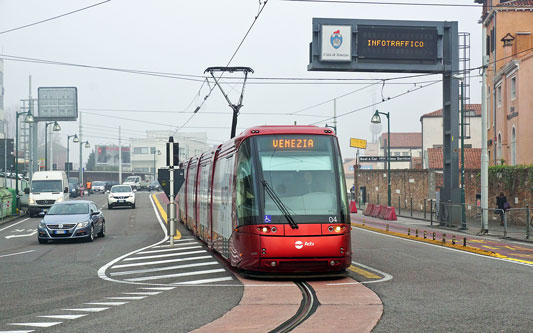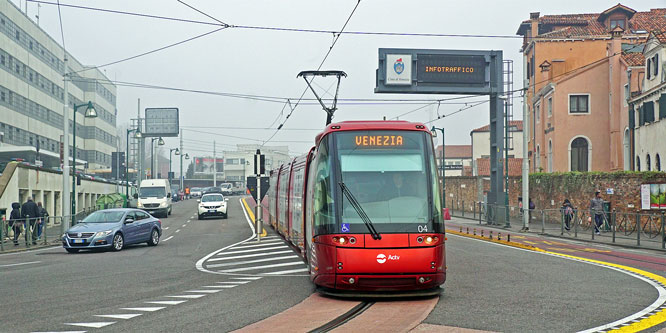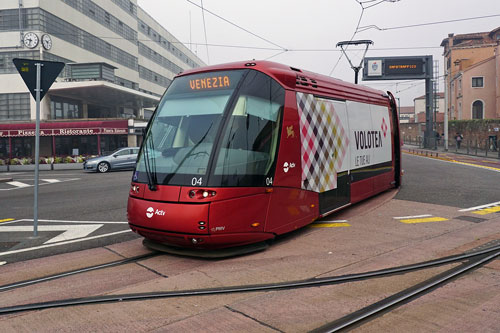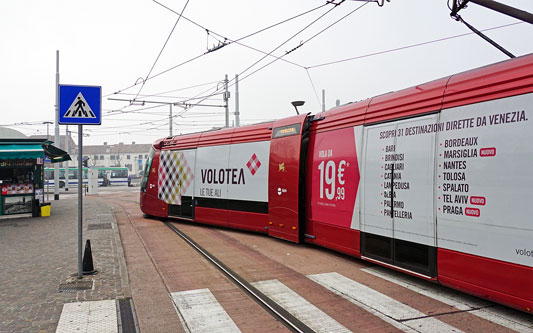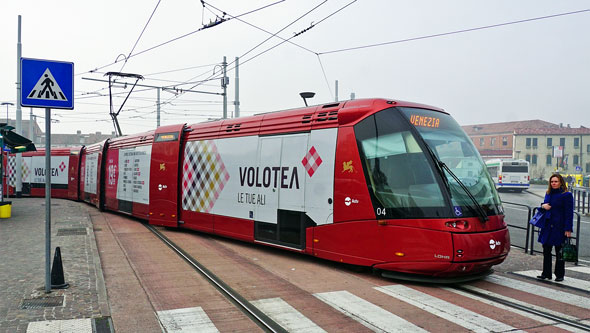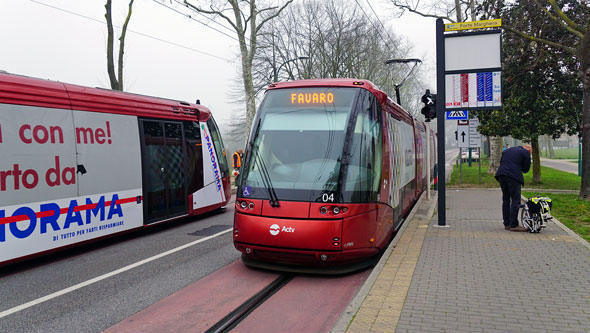|
Simplon - The Passenger Ship Website -
www.simplonpc.co.uk
Simplon Home - www.simplonpc.co.uk - Simplon facebook - Recent Updates - Search Simplon - Copyright Information - Contact Simplon This website has no connection with any shipping company, cruise line, boat operator or other commercial organisation - There are no postcards for sale on this website |
||
|
Venice Trams - Tranvia di Mestre Actv All images link to larger copies which will open in a new window/tab This page is under construction! |
||
|
This page shows images of the Tranvia di Mestre in
Venice, operated by Actv.
The Tranvia di Mestre is a tramway forming part of the public transport system in Mestre, Favaro Veneto and Marghera, three boroughs of the city and commune of Venice, northeast Italy. Since 2015, the tramway has link from the mainland to piazzale Roma (the main bus station) in Venice. The tramway uses Translohr rubber-tyred system. Translohr is the name of a rubber-tired tramway (or guided bus) system originally developed by Lohr Industrie of France and now by a consortium of Alstom and Fonds Stratégique d'Investissement (FSI) as newTL (taking over from Lohr in 2012). It is used in Clermont-Ferrand, Medellín, Tianjin, Shanghai, Padua, Paris and in the Venice-Mestre district. The Translohr system is intended to provide a much more tram or light rail-like experience than that provided by regular buses. Unlike other guided bus systems (including the similar but incompatible Guided Light Transit system developed by Bombardier Transportation), Translohr cars are permanently fixed to following a guide rail and cannot divert from it, as is the case with traditional steel-wheeled rail vehicles. With the guide rail automatically guiding the vehicle along its route, there are no steering controls in the driver's cab (although acceleration and braking are controlled by foot pedals, as in a standard bus). Like a conventional tram, power is provided by overhead wires and collected with a pantograph, although the vehicle can also run on internal batteries (arranged in packs) on sections of the route where overhead wires are deemed to be undesirable. There are two main designs for the vehicles; the bi-directional STE series, and the uni-directional SP Prime series. They consist of three to six articulated sections like a conventional tram, with a length from 25 to 46 metres long and 2.2 metres wide. Their net weight is 23-44 tons, depending on the number of car sections. Because Translohr LRVs cannot run without a guide rail they are not classified as buses, hence the vehicles are not equipped with licence plates. 8 cities have already started operating their tramway networks with the Translohr: Clermont-Ferrand (France) since 2006, Padua (Italy) since 2007, Tianjin (China) since 2007, Shanghai (China) since 2009, Mestre-Venice (Italy) since 2010, In Paris, the RATP adopted the Translohr solution to equip its lines : Saint Denis-Sarcelles (Paris RATP T5) since 2013, Chatillon – Vélizy – Viroflay (Paris RATP T6) since 2014. Medellín (Colombia): since October 2015. Medellín is the first Latin American city operating a tram line with tramways on tyres.. Ref: Wikipedia |
||
